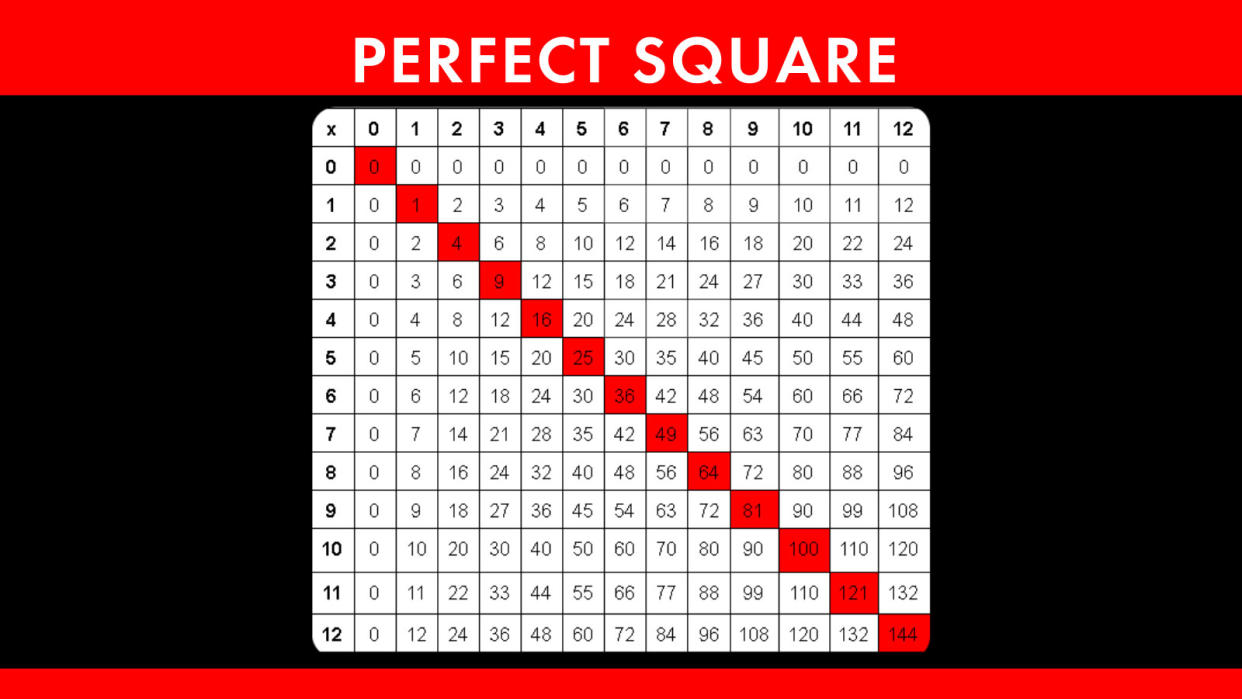What Is a Perfect Square?

You know what a square is: It's a shape with four equal sides. Seems hard to improve upon, right? But what is a perfect square? In order to explain that, we'll have to dig into some math.
Defining Perfect Squares
A perfect square is a special type of number that you get by multiplying another number by itself. It's like the mathematical equivalent of a square shape — neat, balanced, and intriguing.
To illustrate, when you multiply 5 by 5, you get 25, making 25 a perfect square because it's the result of 5 x 5.
Identifying Perfect Squares
So, how can you determine if a number is a perfect square? The trick lies in finding its square root, which is the reverse operation of squaring a number. If the square root yields a whole number, you're looking at a perfect square.
For instance, the square root of 16 is 4 because 4 x 4 = 16. Therefore, 16 is indeed a perfect square. Likewise, if you calculate the square root of 144, you'll find it's 12 because 12 x 12 = 144. Bingo! Another perfect square.
Perfect Squares Chart
To help you get a better grasp of perfect squares, here are a few more common examples:
1 x 1 = 1
2 x 2 = 4
3 x 3 = 9
4 x 4 = 16
5 x 5 = 25
6 x 6 = 36
7 x 7 = 49
8 x 8 = 64
9 x 9 = 81
10 x 10 = 100
As you can see, each of these numbers can be expressed as the product of two equal integers, making them perfect squares.
Characteristics of a Perfect Square
Now that we've defined perfect squares and how to identify them, let's explore a few more details to deepen our understanding.
When examining perfect squares, notice a fascinating pattern: The units place digit of a perfect square is always 0, 1, 4, 5, 6, or 9. This characteristic can be quite handy when identifying perfect squares quickly.
If you want to go a step further and find perfect squares manually, you can use long multiplication method.
Perfect squares are not limited to small numbers; they extend far beyond. For instance, 625 is a perfect square because it's the result of 25 x 25. Exploring larger perfect squares can be a fun mathematical journey.
The Beauty of Perfect Squares
Perfect squares are not just mathematical curiosities; they have real-world applications in various fields, including geometry and algebra. Understanding them can open doors to a deeper appreciation of mathematics.
Now That's Interesting
The Egyptians calculated square roots as far back as 1650 B.C.E.
This article was updated in conjunction with AI technology, then fact-checked and edited by a HowStuffWorks editor.
Original article: What Is a Perfect Square?
Copyright © 2023 HowStuffWorks, a division of InfoSpace Holdings, LLC, a System1 Company

